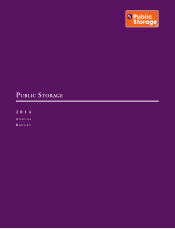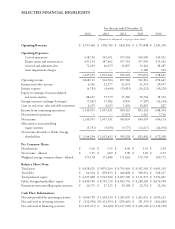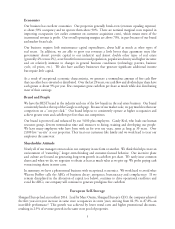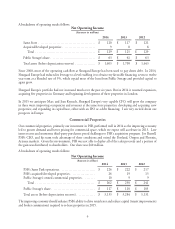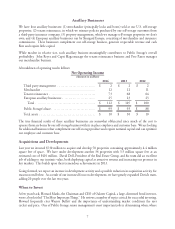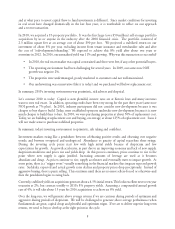Public Storage 2014 Annual Report Download - page 11
Download and view the complete annual report
Please find page 11 of the 2014 Public Storage annual report below. You can navigate through the pages in the report by either clicking on the pages listed below, or by using the keyword search tool below to find specific information within the annual report.8
and at what price to invest capital (how to fund investments is different). Since market conditions for investing
in real estate have changed dramatically in the last four years, it is worthwhile to reflect on our approach
and a recent transaction.
In 2010, we acquired a 35-property portfolio. It was the first large (over $50 million) self-storage portfolio
acquisition by us or anyone in the industry after the 2008 financial crisis. The portfolio consisted of
2.3 million square feet at an average cost of about $90 per foot. We projected a stabilized return on our
investment of about 8% per year, excluding income from tenant insurance and merchandise sales and after
the cost of “redevelopment/rebranding.” We expected to achieve this 8% yield after about two years or
sometime in 2012. In 2014, our annualized yield was 11% and growing. Why was this transaction so successful?
• In 2010, the real estate market was capital constrained and there were few, if any, other potential buyers.
• The operating environment had been challenging for several years. In 2009, our same store NOI
growth was negative 2%.
• The properties were undermanaged, poorly marketed to customers and not well maintained.
• Our underwriting was conservative (like it is today) and we purchased well below replacement cost.
In summary, 2010’s investing environment was pessimistic, risk adverse and skeptical.
Let’s contrast 2010 to today. Capital is now plentiful, interest rates are at historic lows and many investors
want to own real estate. In addition, operating results have been very strong for the past three years (same store
NOI growth at 7% plus). In 2010, industry participants did not consider new development because it was
cheaper to buy than to build. Today, most established operators undertake new development because it is now
much cheaper to build than to buy. In 2010, we were purchasing properties at about 50% of replacement cost.
Today, we are building at replacement cost and buying, on average, at about 125% of replacement cost. Soon it
will not make sense to purchase stabilized properties.
In summary, today’s investing environment is optimistic, risk taking and confident.
Investment markets swing like a pendulum: between celebrating positive results and obsessing over negative
trends; and between overpriced and underpriced. Abundance or paucity of capital exacerbate these swings.
During the investing cycle prices start low with high initial yields because of skepticism and low
expectations for growth. As growth accelerates, in part due to an improving economy and lack of new supply,
skepticism moderates and prices rise and yields drop. As this process continues, prices continue to rise to the
point where new supply is again justified. Increasing amounts of leverage are used as it becomes
abundant and cheap. As prices continue to rise, supply accelerates and eventually starts to impact growth. At
some point, there is a “trigger event”–usually something in the financial markets that impacts expected growth
rates. Suddenly, expected and actual growth rates decline and property prices drop precipitously. Instead of
aggressive buying, there is panic selling. This continues until there are no more sellers–forced or otherwise–and
then the pendulum begins to swing back.
Currently, stabilized yields on acquisitions generate about a 4.5% initial return. This looks excellent next to ten-year
treasuries at 2%, but contrast terribly to 2010’s 8% property yields. Assuming a compounded annual growth
rate of 4%, it will take about 15 years for 2014 acquisitions to achieve an 8% yield.
Over the long-run, we will generate above average returns if we are cautious during periods of optimism and
aggressive during periods of skepticism. We will be challenged to generate above average performance when
fundamentals are great, capital cheap and plentiful and optimism reigns. If we are to deliver superior long-term
returns, we need to buy or develop at the right points in the cycle.

